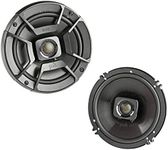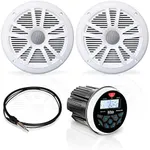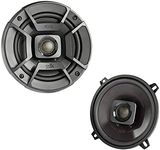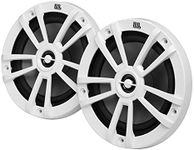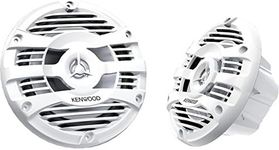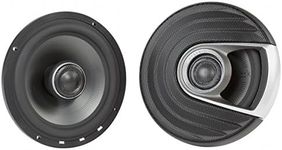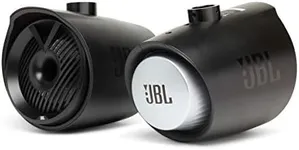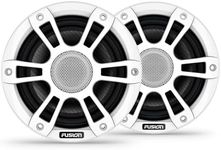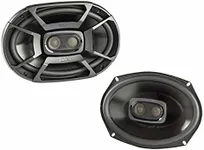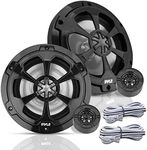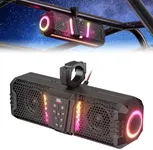Buying Guide for the Best Boat Speakers
When choosing boat speakers, it's important to consider the unique environment in which they will be used. Marine speakers need to withstand harsh conditions such as water, salt, and sun exposure. Therefore, durability and sound quality are key factors. Additionally, you should think about the type of music you enjoy, the size of your boat, and where you plan to install the speakers. By understanding the key specifications, you can make an informed decision that will enhance your boating experience with great sound quality and longevity.Waterproof RatingThe waterproof rating indicates how well the speakers can resist water. This is crucial for boat speakers as they will be exposed to water splashes and possibly rain. The rating is usually given in IP (Ingress Protection) format, such as IPX5 or IPX7. IPX5 means the speakers can handle water jets, while IPX7 means they can be submerged in water up to 1 meter for 30 minutes. For most boating needs, an IPX6 or IPX7 rating is recommended to ensure the speakers can withstand the marine environment.
Power Handling (RMS and Peak)Power handling refers to the amount of power a speaker can handle without being damaged. RMS (Root Mean Square) is the continuous power a speaker can handle, while Peak power is the maximum power it can handle in short bursts. Higher power handling means the speakers can produce louder and clearer sound. If you enjoy loud music or have a powerful amplifier, look for speakers with higher RMS and Peak power ratings. For casual listening, lower power handling may suffice.
Frequency ResponseFrequency response indicates the range of sounds a speaker can reproduce, measured in Hertz (Hz). A wider frequency range means the speaker can produce both deep bass and high treble sounds. For example, a range of 20Hz to 20kHz covers the full spectrum of human hearing. If you enjoy a variety of music genres, look for speakers with a wide frequency response. If you prefer specific types of music, such as bass-heavy genres, focus on speakers with good low-frequency response.
SensitivitySensitivity measures how efficiently a speaker converts power into sound, expressed in decibels (dB). Higher sensitivity means the speaker can produce more sound with less power. This is important if you have a lower-powered amplifier or want to maximize battery life. Sensitivity ratings typically range from 85dB to 100dB. For most boaters, a sensitivity rating of 88dB to 92dB is sufficient, but if you want louder sound with less power, look for speakers with higher sensitivity.
Build MaterialThe build material of the speakers affects their durability and sound quality. Marine speakers are often made with materials like polypropylene, rubber, and stainless steel to resist corrosion and UV damage. Polypropylene cones are durable and provide good sound quality, while rubber surrounds offer flexibility and longevity. Stainless steel or coated grilles protect the speakers from the elements. Choose speakers with high-quality, marine-grade materials to ensure they last longer in harsh marine conditions.
Mounting OptionsMounting options refer to how and where you can install the speakers on your boat. Common options include flush mount, surface mount, and tower mount. Flush mount speakers are installed into the boat's surface for a clean look, while surface mount speakers are easier to install and can be placed in various locations. Tower mount speakers are typically used on wakeboard towers for directional sound. Consider your boat's layout and where you want the sound to project when choosing the mounting option.
